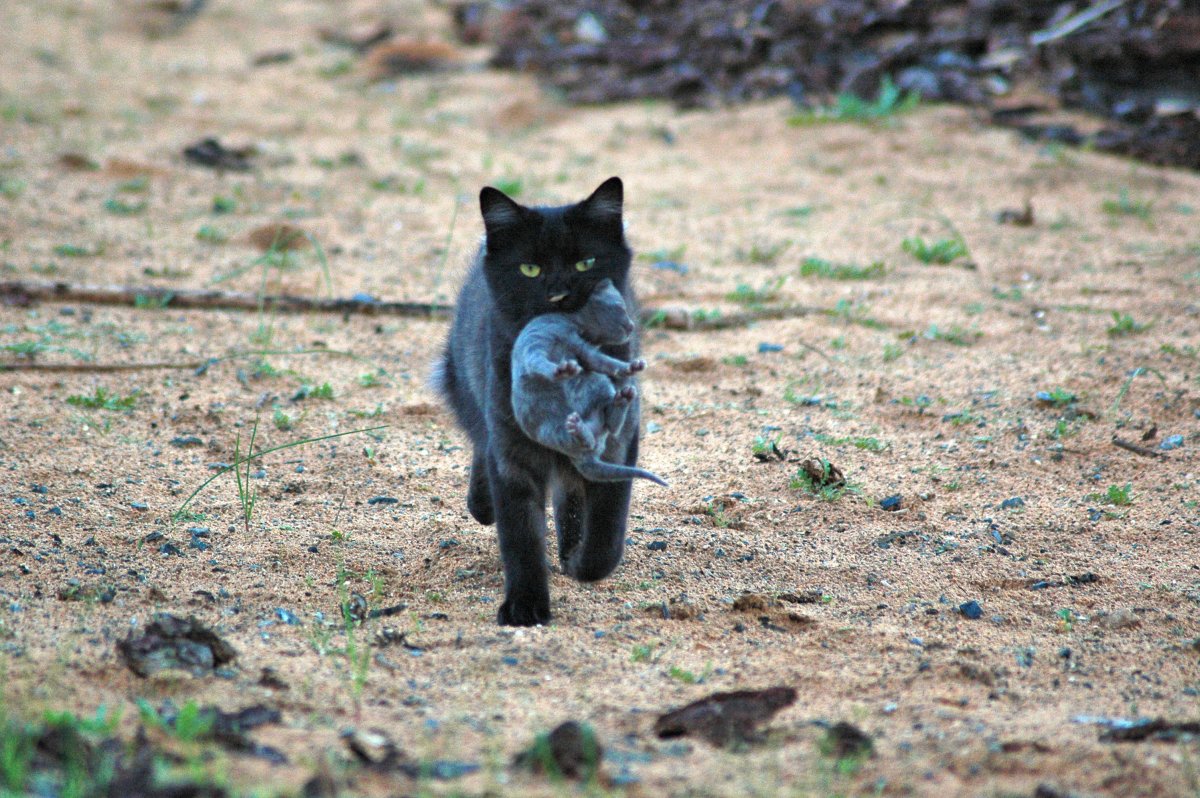Australia has announced a five-year plan to rid the country of feral cats by killing them with a toxic gel in order to keep native species safe.
Feral cats are responsible for the extinction of over two dozen species in Australia and are severely impacting the survival of many others. The West Australia government debuted a plan on Tuesday that involves using a deadly new tool that will cull the invasive cat population.
"These feral cats are incredibly devastating on native animals," West Australia Environment Minister Reece Whitby said at a press briefing announcing the initiative, as reported by local news network ABC Australia. "We need to do something: this is a major increase in our activity. We're trying to give native species a fighting chance against this incredible, voracious predator."

Australia's solution to this problem is the Felixer grooming trap, which will spray the cats with toxic goo. The cats will then lick the gel off themselves—containing 1080 poison, or sodium fluoroacetate—poisoning themselves in the process.
The feral cats came to Australia as an invasive species via European colonizers and are responsible for the deaths of millions of native animals. Feral cats are estimated to kill around 3 million mammals, 1 million birds, and 1.7 million reptiles every 24 hours across the country, local news network WAToday reported.
These cats are also linked to the extinction of 28 species in Australia and are considered a major threat to over 100 others, including woylies, rock-wallabies, numbats and several species of birds and reptiles.

Felixers will be rolled out as part of the West Australian government's five-year feral cat strategy. This will include leasing 16 of the Felixers from their parent company Thylation using non-government conservation groups and Commonwealth grants, and placing them in areas where there are threatened species living.
The Felixers are solar-powered and use lasers and cameras to tell if a passing animal is a feral cat or not, only spraying them with the poison if they have the shape and gait of a cat. They work best in areas where lots of the cats pass through, like fence lines.
"In thousands and thousands of tests, it's been able to correctly identify a feral cat as opposed to a native animal," Whitby said

The Western Australian Feral Cat Working Group found that the Felixers are useful in areas where baiting and using firearms is inappropriate, but that they were expensive and not suited to use on a large scale.
The five-year feral cat strategy will also include baiting across the state where appropriate, increasing up to 880,000 baits annually, as well as increased funding for communities to help eliminate the cats.
The killing of these cats isn't always popular amongst locals, however. In 2016, a bow-hunter who shared footage of culling feral cats online received death threats, according to Australia's Nine News.
Do you have a tip on a science story that Newsweek should be covering? Do you have a question about feral cats? Let us know via science@newsweek.com.
Uncommon Knowledge
Newsweek is committed to challenging conventional wisdom and finding connections in the search for common ground.
Newsweek is committed to challenging conventional wisdom and finding connections in the search for common ground.
About the writer
Jess Thomson is a Newsweek Science Reporter based in London UK. Her focus is reporting on science, technology and healthcare. ... Read more





